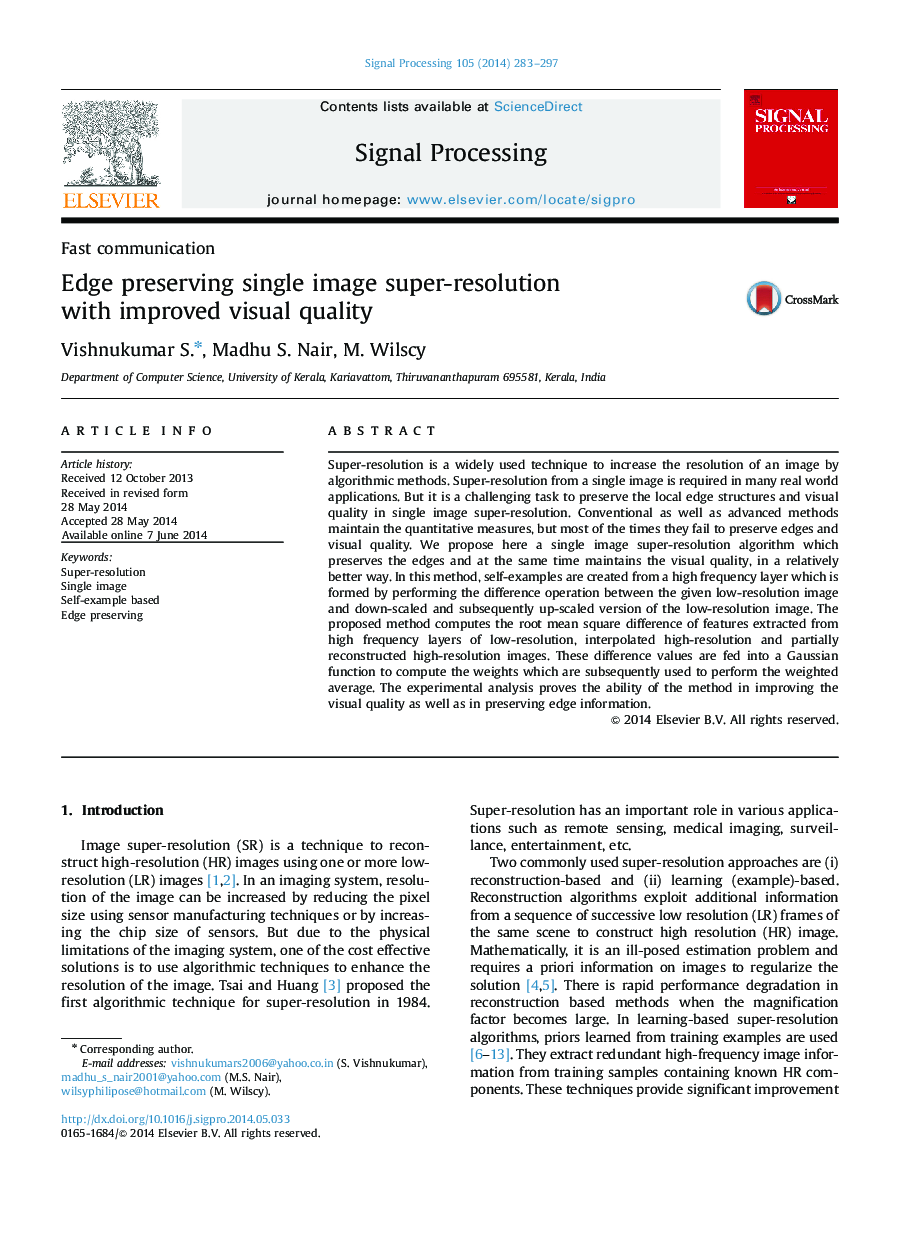| Article ID | Journal | Published Year | Pages | File Type |
|---|---|---|---|---|
| 563733 | Signal Processing | 2014 | 15 Pages |
Super-resolution is a widely used technique to increase the resolution of an image by algorithmic methods. Super-resolution from a single image is required in many real world applications. But it is a challenging task to preserve the local edge structures and visual quality in single image super-resolution. Conventional as well as advanced methods maintain the quantitative measures, but most of the times they fail to preserve edges and visual quality. We propose here a single image super-resolution algorithm which preserves the edges and at the same time maintains the visual quality, in a relatively better way. In this method, self-examples are created from a high frequency layer which is formed by performing the difference operation between the given low-resolution image and down-scaled and subsequently up-scaled version of the low-resolution image. The proposed method computes the root mean square difference of features extracted from high frequency layers of low-resolution, interpolated high-resolution and partially reconstructed high-resolution images. These difference values are fed into a Gaussian function to compute the weights which are subsequently used to perform the weighted average. The experimental analysis proves the ability of the method in improving the visual quality as well as in preserving edge information.
